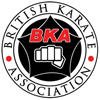Karate originated in the Okinawa Islands in the 14th and 15th century and was developed from the martial arts from China, in fact the original meaning of karate was ‘China Hand’ this was later changed to empty hand. In 1921 the famous karate instructor from Okinawa Gichin Funakoshi demonstrated karate to the crown Prince of Japan (later to become Emperor Hirohito) whilst on a trip to Okinawa. The same year he was invited to Japan to demonstrate karate and was soon spending most of his time there spreading karate throughout Japan. Karate was now seen not just as an unarmed self defence system but a way of keeping the body healthy and improving the character of the individual. One of Funakoshi’s quotes is ‘ The ultimate aim of karate lies not in victory or defeat, but in the perfection of the character of it’s participants’ and this still holds true today. Funakoshi is known as the father of modern day karate. After the second World War karate was introduced to the United States of America and from there to the rest of the world.
Students wear what is known as a GI ( pronounced gee ) a white karate suit, different coloured belts are worn to identify the stage in their Karate development, this usually starts at white and goes to yellow, orange, green, blue, purple, brown and then eventually after a minimum of three year training black belt. The coloured belts are called ‘kyu’ grade pronounced kew as in chew and the black belt grades are called dan – so a 1 st degree black belt would be known as Shodan, Japanese counting 1-5 is Ichi, Ni, San, Shi, Go therefore a 3 rd degree black belt would known as Sandan. Karate is a mixture of kicking techniques and Hand techniques. Most styles of karate focus on three main elements Kihon – which is the basic techniques, Kata – which is the prearranged set movements and can take a lifetime to master and kumite – which is the sparring.
Today karate is practiced in every country in the World and is a great activity for young people as it instills discipline, good manners and etiquette and from its physical side improves fitness, confidence and self defence. Most karate is now taught as karate-do the Do meaning way or way of life and means that many people practice karate to improve their character as much as there physical ability to defend themselves.
THE MAIN STYLES OF KARATE
Shotokan was formed in Tokyo in 1938 by Gichin Funakoshi, considered by many to be modern karate’s founding master. Funakoshi was born in Okinawa in 1868 and studied with one of the most well respected karate experts of the time, Yasutsune Azato. Funakoshi moved to Tokyo in 1921, bringing his karate skill and know how with him. Shotokan derived its name from a penname used by Funakoshi, which he used to sign poems he wrote as a youth. This style of karate makes use of linear techniques and wide stances, designed to quickly deliver power strikes.
Shito-ryu was introduced by Kenwa Mabuni in 1928 and utilizes an estimated fifty katas influenced by Naha-te and Shuri-te disciplines. The name Shito is a name given to the combination of Japanese characters of Ankoh Itosu and Kanryo Higaonna, instructors to Mabuni. Technique is key to this form of karate, with a great emphasis on power and accuracy in striking.
Wado-ryu was created by Hienori Otsuka is 1939 and is influenced by Gichin Funakoshi jujitsu and karate techniques. The term “wado-ryo” translates to “way of harmony”, which describes the harmonious basic movements associated with juijitsu, including evading an attacker without using a lot of force. Many have described this technique of karate as a spiritual discipline.
Goju-Ryu was founded in 1930 by Chojun Miyagi, said to be Kanryo Higaonna’s best student. Higaonna was a karate master well-known for introducing eight specific forms he learned from Chinese martial artists to his Japanese students. Goju-ryu implements soft circular blocking techniques,
Shukokai (Way for All) was created by Chojiro Tani Sensei in 1946. He studied under the great Karate masters Chojun Miyagi (Goju Ryu) and Kenwa Mabuni (Shito Ryu)< Shukokai was designed around the study of body mechanics, is very fast due to its relatively high stance aiding mobility, and is known for the double hip twist, which maximises the force of its strikes making it one of the most hard-hitting Karate styles. After sensei Tani retired he handed the rains over to is most senior pupil and karate champion Shigeru Kimura who went on to make further improvements to the style
